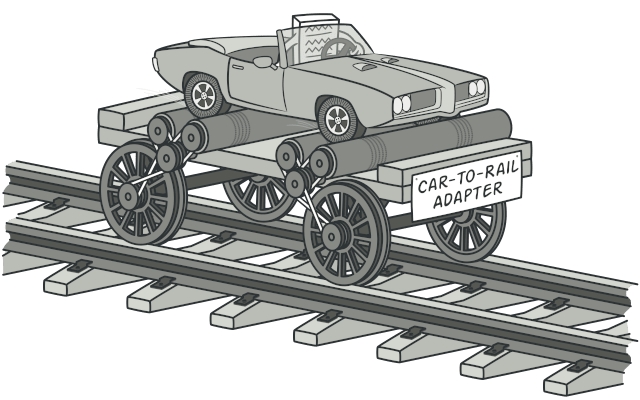🥸Adapter
Adapter is a structural design pattern that allows objects with incompatible interfaces to collaborate.
Usage examples
The Adapter pattern is pretty common in C++ code. It’s very often used in systems based on some legacy code. In such cases, Adapters make legacy code work with modern classes.
Identification
Adapter is recognizable by a constructor which takes an instance of a different abstract/interface type. When the adapter receives a call to any of its methods, it translates parameters to the appropriate format and then directs the call to one or several methods of the wrapped object.
Pros & Cons
Single Responsibility Principle. You can separate the interface or data conversion code from the primary business logic of the program.
Open/Closed Principle. You can introduce new types of adapters into the program without breaking the existing client code, as long as they work with the adapters through the client interface.
The overall complexity of the code increases because you need to introduce a set of new interfaces and classes. Sometimes it’s simpler just to change the service class so that it matches the rest of your code.
Graphic Visual


Example
This example illustrates the structure of the Adapter design pattern. It focuses on answering these questions:
What classes does it consist of?
What roles do these classes play?
In what way the elements of the pattern are related?
Conceptual Example
main.cpp
/**
* The Target defines the domain-specific interface used by the client code.
*/
class Target {
public:
virtual ~Target() = default;
virtual std::string Request() const {
return "Target: The default target's behavior.";
}
};
/**
* The Adaptee contains some useful behavior, but its interface is incompatible
* with the existing client code. The Adaptee needs some adaptation before the
* client code can use it.
*/
class Adaptee {
public:
std::string SpecificRequest() const {
return ".eetpadA eht fo roivaheb laicepS";
}
};
/**
* The Adapter makes the Adaptee's interface compatible with the Target's
* interface.
*/
class Adapter : public Target {
private:
Adaptee *adaptee_;
public:
Adapter(Adaptee *adaptee) : adaptee_(adaptee) {}
std::string Request() const override {
std::string to_reverse = this->adaptee_->SpecificRequest();
std::reverse(to_reverse.begin(), to_reverse.end());
return "Adapter: (TRANSLATED) " + to_reverse;
}
};
/**
* The client code supports all classes that follow the Target interface.
*/
void ClientCode(const Target *target) {
std::cout << target->Request();
}
int main() {
std::cout << "Client: I can work just fine with the Target objects:\n";
Target *target = new Target;
ClientCode(target);
std::cout << "\n\n";
Adaptee *adaptee = new Adaptee;
std::cout << "Client: The Adaptee class has a weird interface. See, I don't understand it:\n";
std::cout << "Adaptee: " << adaptee->SpecificRequest();
std::cout << "\n\n";
std::cout << "Client: But I can work with it via the Adapter:\n";
Adapter *adapter = new Adapter(adaptee);
ClientCode(adapter);
std::cout << "\n";
delete target;
delete adaptee;
delete adapter;
return 0;
}output.txt
Client: I can work just fine with the Target objects:
Target: The default target's behavior.
Client: The Adaptee class has a weird interface. See, I don't understand it:
Adaptee: .eetpadA eht fo roivaheb laicepS
Client: But I can work with it via the Adapter:
Adapter: (TRANSLATED) Special behavior of the Adaptee.
Last updated